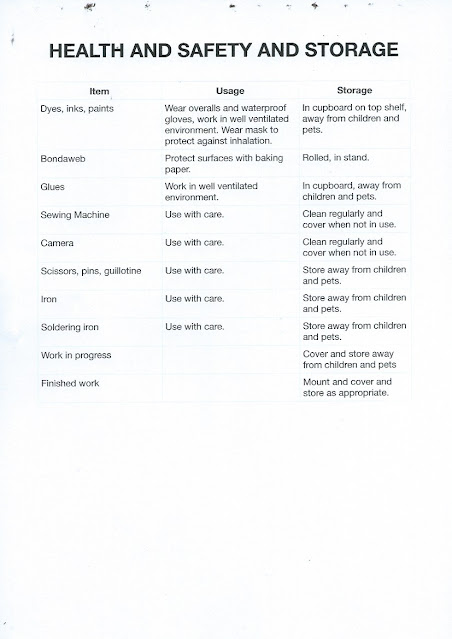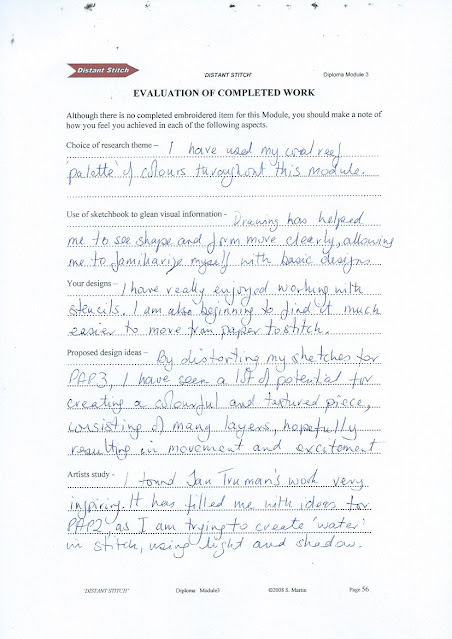I have chosen Jan Truman to study because to the following quote I found on her website:
“Life is never static. Movement is life. Whether it’s simple spontaneous actions or more complex patterns. We all dance to the rhythms of life.”
 |
| Jan Truman at work |
Jan has a background in textiles, having a Masters Degree in Textile Design from the Royal College of Art, London and a BA Hons in Knitwear Design from Nottingham.
She creates sculptural textiles from knitted wire which she uses to create distinctive sculptures and jewellery. I am particularly interested in her sculptures as I have always enjoyed working on 3D stitch projects. Some of her sculptures are over 2 metres high and using colour, form and changing visual effects are all key elements of her work.
 |
| Aura by Jan Truman |
She is fascinated by the intricate patterns of ‘structures’, both natural and man-made. She uses traditional techniques and adds her own personal interpretation as she creates her designs. For Jan each new creation is a blend of excitement and challenge. For example, her use of light helps to intensify colour and to create shadow, adding to the visual effect, releasing the sculpture from its physical dimensions to dance around a room.
 |
| Sculpture by Jan Truman |
She has used knitting techniques to create her distinctive designs, experimenting with various threads, before developing her own style of working with wire. Her design process starts with visualising the overall structure and then working on each of the individual elements, looking at colour, shape and texture. Her designs are then made into wire ribbons and sculpted into shape. She balances movement with colour to create her inspiring pieces.
I have 'had a go' at knitting with wire. I am not a knitter and only the the basic stitches of plain and purl. I used 2 sizes of bamboo needles, 4mm and 25 mm. I experimented with 2 sizes of wire, .4mm and 1mm diameter. I found the smaller needles were much easier to use.
Plain and purl stitch 25mm needles with 1mm wire.
Plain stitch on 25mm needles with 1mm wire.
Purl stitch on 4mm needles with .4mm wire.
I found this really hard work and my wrist and fingers were quite sore! It makes me appreciate Jan's mastery of her techniques. It has filled me with enthusiasm for practising knitting with wire and as it could tie in well with my theme of coral reefs.

















































